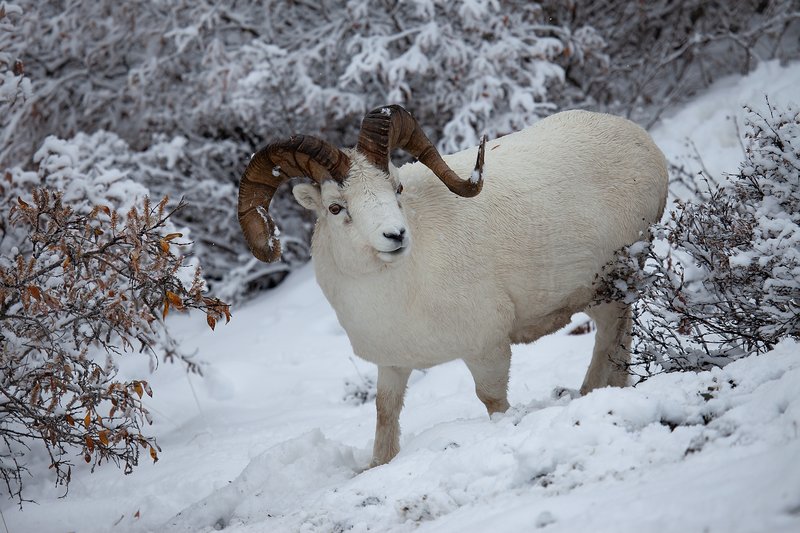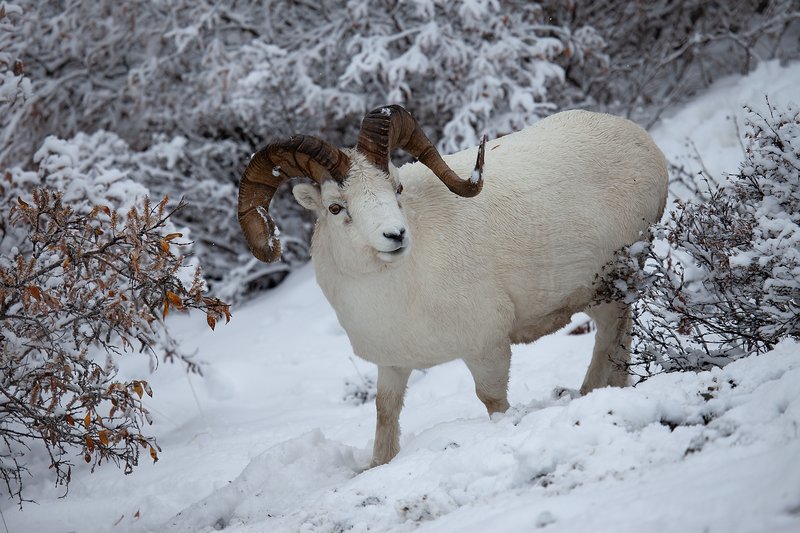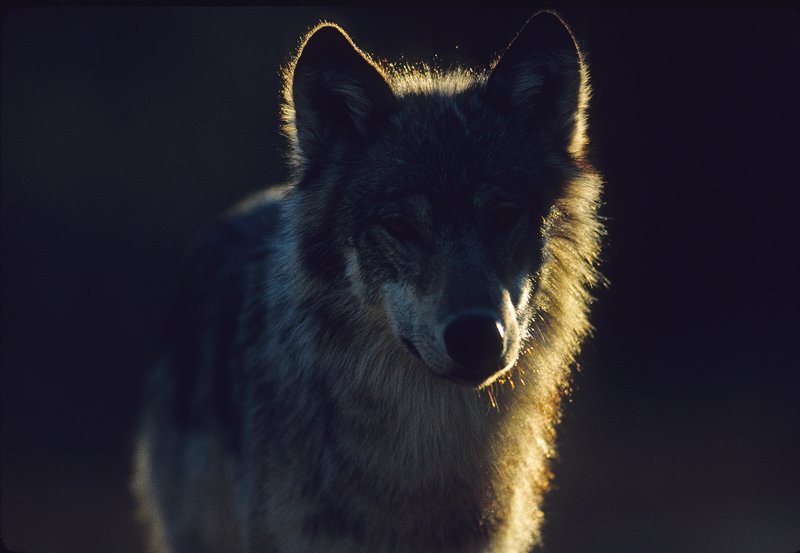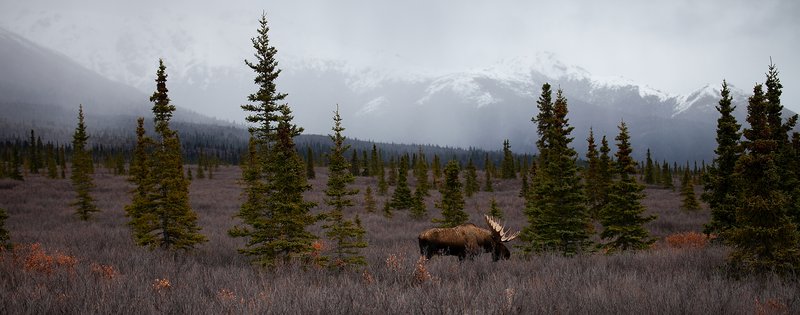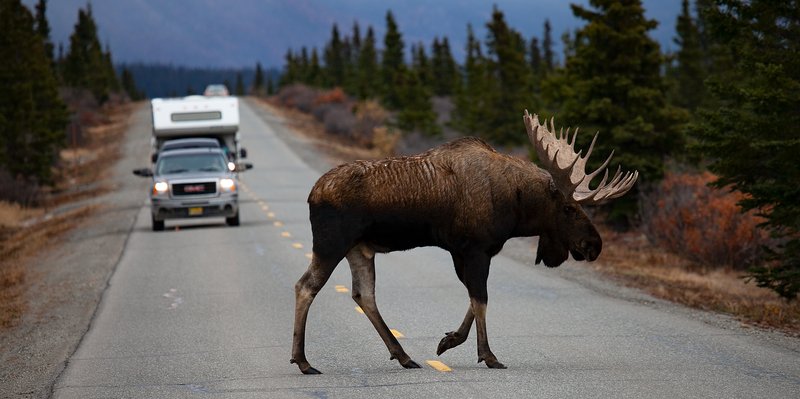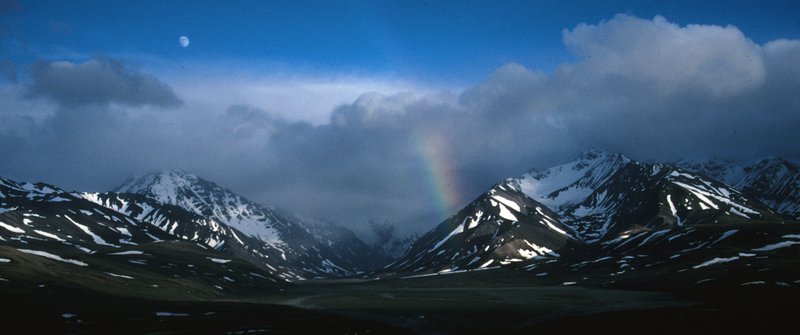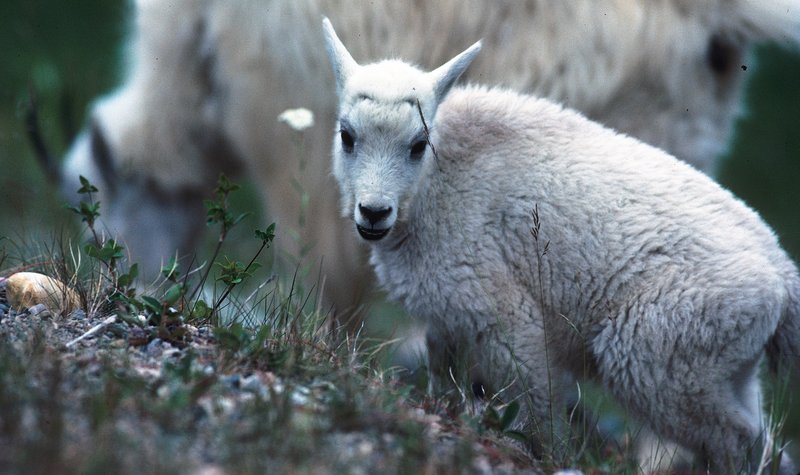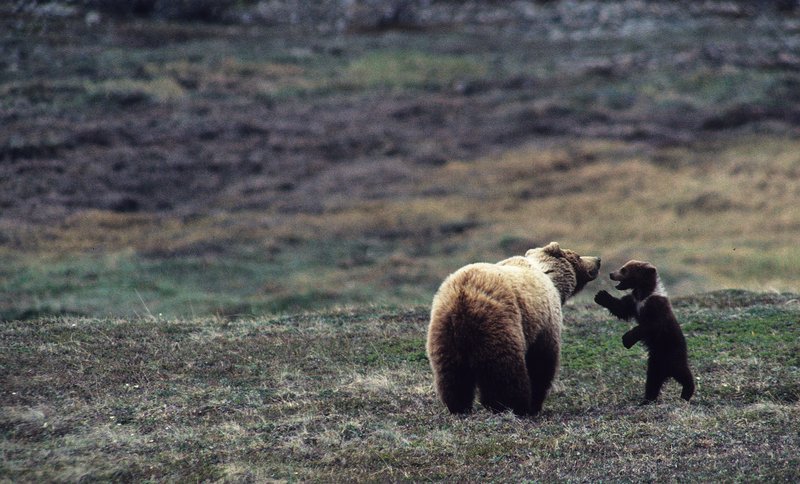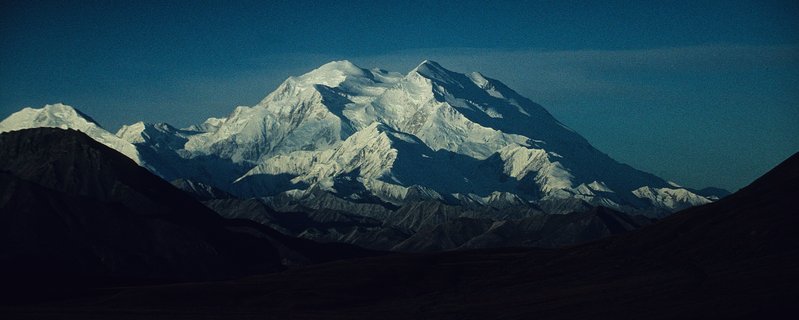Bull Moose, Denali National Park, AK
There are about 500 moose-vehicle accidents on Alaska rural roads each year. Accidents peak in December and January with nearly three-quarters of all accidents occurring during darkness, although it is dark of the most of time during Alaskan winters. During winter, deep snow bogs down moose and exhausts them, therefore the cleared pathways provided by roads, trails and railways are common routes used for foraging and migration. Mature bull moose weigh between 1100-1600 pounds and stand up to seven feet tall, so moose and passengers are often seriously injured or killed in collisions.
Cars can only drive the first 15 miles of the Denali Park Road, the only road in the park, so it’s rare to see a bull moose on the road and if you are lucky enough to encounter one, it’s more likely to create a nice photograph and a short traffic delay than an accident.
The 49th State
It’s been 40 years (or perhaps more) since Walker Golder and I drove to Alaska on the Alaska Highway (ALCAN). Portions of the road were still tar and gravel at the time and I never did get all of the tar off of my truck. After a couple of weeks in Alaska, Walker had to fly back to North Carolina for work and my friend Brian Whittier took his place as I continued my first Alaskan experience. Walker went on to run Audubon’s North Carolina Coastal Islands Sanctuary and now is Executive Director of the North Carolina Coastal Land Trust. Brian, and his immediate and extended families, is still a close friend even though he lives more than 2,000 miles away. I reluctantly returned to Chapel Hill for the start of the Fall semester, but part of me never left Alaska and I’ve been back dozens of times since.
A photographer needs many things to successfully work in Alaska and, at times, it resembles working in a foreign country. There aren’t many roads and even the ones there are rarely provide easy access to wildlife. You need colleagues and friends who have planes, boats and residency, for you are, and always will be, an “outsider.” Fortunately, many people helped me, educated me and welcomed me.
I slept many nights on the couch in Leo and Dorothy Keeler’s camper as the one guest that their professional photography permit allowed in Denali National Park. They were leaders of the private, non-profit group Friends of McNeil River for a decade and introduced me to that group as well. They are two of the 40 founding members of the prestigious International League of Conservation Photographers and are now working to restore monarch butterfly populations across the country.
I also shared numerous journeys in southeast Alaska with Cynthia D’Vincent, the founder and director of the Intersea Foundation, on her boat Acania, collecting data on the social interactions of humpback whales. Cynthia is one of the people credited with discovering cooperative feeding behaviors in humpback whale populations.
During that time, I met Pete Devaris, the owner of Alaska Coastal Airlines in Juneau. Pete established, built and ran a grizzly bear viewing program in conjunction with the Koniag Native Corporation on Camp Island on Kodiak Island. It was a small operation where bear viewing was a priority and profit was secondary. Pete loved bears and knew every bear on the river. He had hired Scott Shelton to serve as guide, cook, boat captain and storyteller. The cabins were simple and efficient and the patrons were friendly and respectful. Pete and Scott let me come and go as I pleased and I spent parts of every summer at the sanctuary for many years thanks to financial support from Michael Hooker, then Chancellor at the University of North Carolina at Chapel Hill.
Michael, his wife Carmen and I had traveled together on a General Alumni Association sponsored trip to Alaska and they fell in love with bears as well. Both Scott and Michael died at a young age and I only returned once to Camp Island after that. Pete is now an Aviation Safety Specialist for the Federal Aviation Administration in Anchorage and I see him and his lovely family whenever I’m in Alaska and he remains a source of inspiration for my Alaskan photography.
I worked mostly on educational media projects in Alaska. I’ve been to every stop on the Alaska Marine Highway and most stops on the Alaska Railroad, yet I’ve only seen a small fraction of the state. This slide show contains a few of my favorite places.
